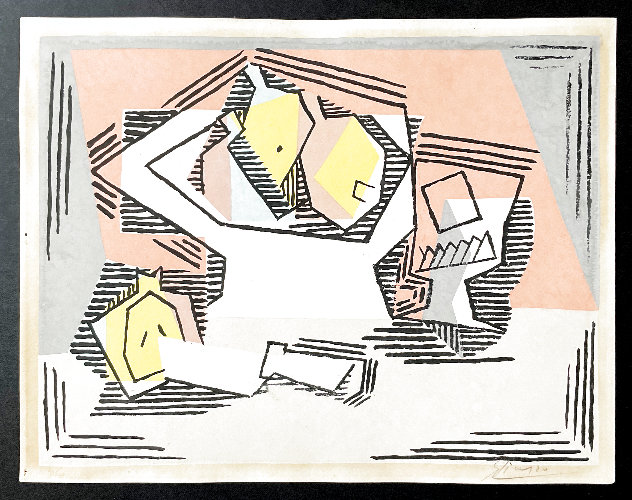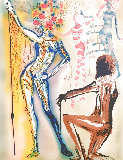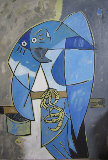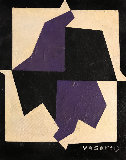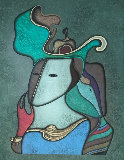



Alceando a Un Toro 1959
Pablo Picasso
Limited Edition Print : Sugar-lift Aquatint on Guarro Paper
Size : 7x11 in | 18x28 cm
Framed : 14x24 in | 36x61 cm
Edition :
Year1959
Other“bullshead watermark designed by the artist
Condition Excellent
Framed with PlexiglassWood
Provenance / HistoryPark west Gallery
Story / Additional InfoPer the description on this art (pictured below), there is nothing about it being signed by the artist, rather it should have a “bull's head watermark designed by the artistâ€.
Also, please note, not all art pieces have the annotation numbers written on the art – some artists may have chosen not to include those. However, your Certificate of Authenticity says, “one of 26â€â€¦. This means any “one ofâ€â€¦ and not the numerical #1 of 26.
Certificate of AuthenticityPark West
Additional InformationVery Desired
LID146517
Pablo Picasso - Spain
Art Brokerage: Park West Artist: Pablo Picasso Blue Chip Spanish Artist: Pablo Picasso was one of the most influential artists of the 20th century. His ingenious use of form, color, and perspective profoundly impacted later generations of painters, including Willem de Kooning and David Hockney. "There are artists who transform the sun into a yellow spot, but there are others who, thanks to their art and intelligence, transform a yellow spot into the sun," he once said. Born Pablo Diego José Francisco de Paula Juan Nepomuceno Crispín Crispiniano María de los Remedios de la Santísima Trinidad Ruiz Picasso on October 25, 1881 in Málaga, Spain, his prodigious talent was cultivated early on by his father the painter Jose Ruíz Blasco. Picasso went on to attend the Royal Academy of San Fernando in Madrid, and lived for a time in Barcelona before settling in Paris in 1904. Immersed in the avant-garde circles of Gertrude Stein, he rapidly transitioned from Neo-Impressionism through the Blue Period and Rose Period, before reaching a culmination in his masterpiece Les Demoiselles d'Avignon (1907). Constantly in search of pictorial solutions and in dialogue with his friend Georges Braque, Picasso melded forms he saw in African sculpture with the multiple perspectives he gleaned from Paul Cézanne, to produce Cubism. Not limited to painting, the artist also expressed himself through collage, sculpture, and ceramics. Having been deeply affected by the ongoing Spanish Civil War, Picasso created what is arguably his most overtly political work Guernica (1937), a mural-sized painting depicting carnage with jagged shapes and contrasting grayscale. The artist was prolific up until his death on April 8, 1973 in Mougins, France. Today, his works are held in the collections of The Museum of Modern Art in New York, the Tate Gallery in London, the Hermitage Museum in St. Petersburg, as well as institutions devoted solely to his life work, such as the Museo Picasso Málaga, the Museu Picasso in Barcelona, and the Musée National Picasso in Paris. Listings wanted.







